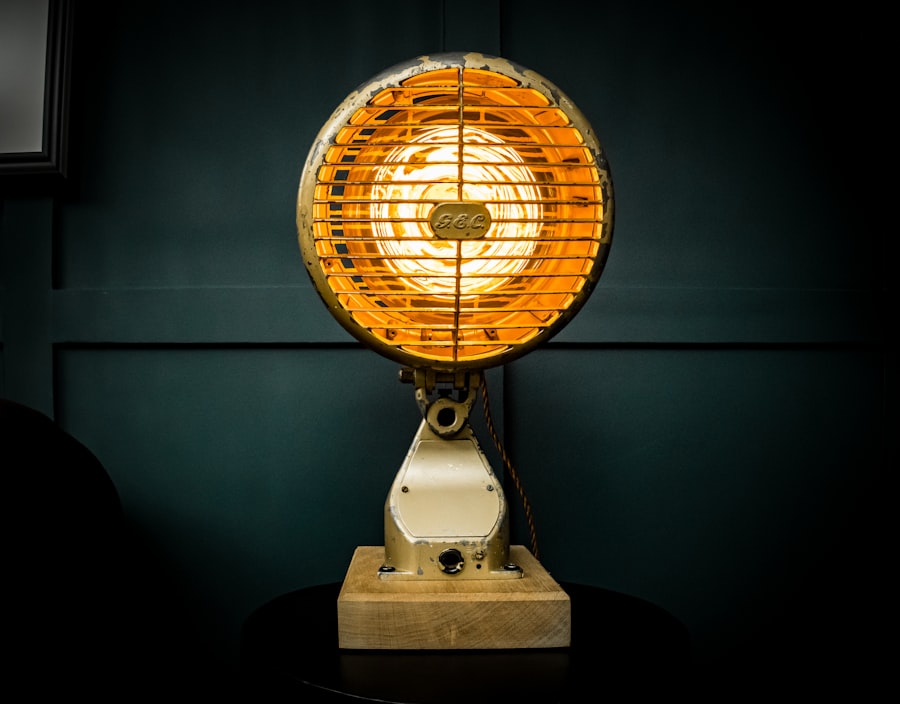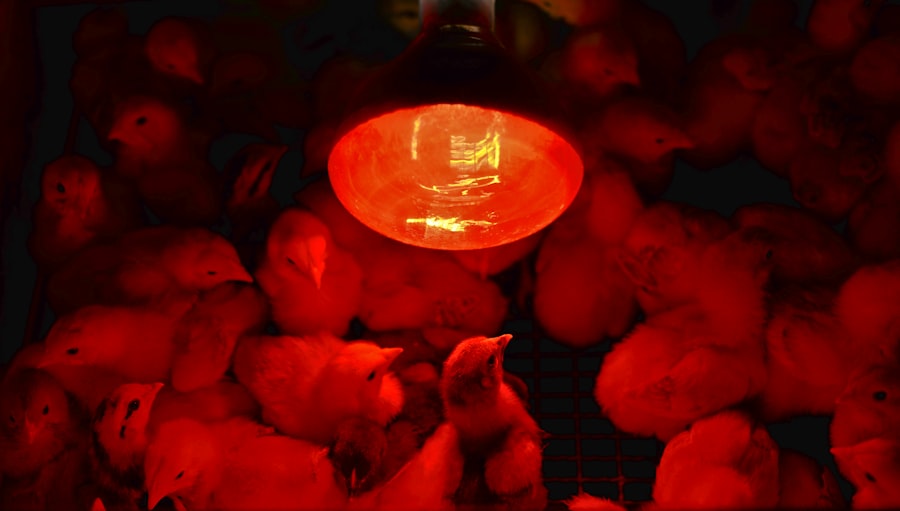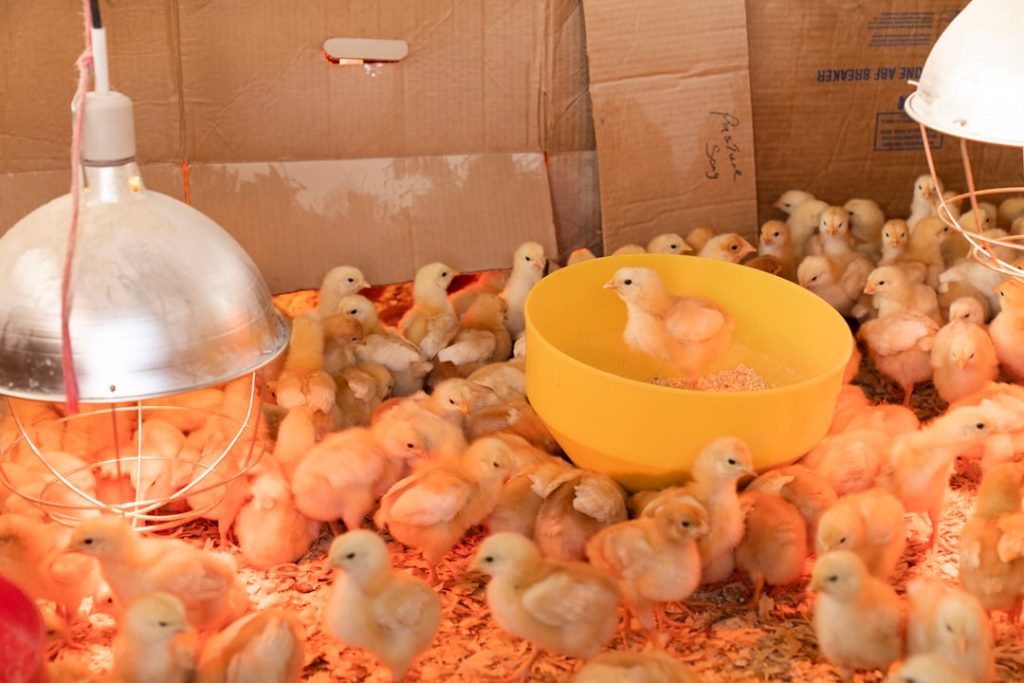When selecting baby chickens, several factors should be considered. The primary consideration is the purpose of raising chickens: egg production, meat production, or dual-purpose breeds. Each type has distinct characteristics and requirements.
For egg production, breeds like Rhode Island Red, Leghorn, and Australorp are known for high laying rates. Meat birds such as Cornish Cross and Freedom Ranger are bred for rapid growth and high meat yield. Dual-purpose breeds like Plymouth Rock or Orpington provide both eggs and meat.
Climate adaptability is another important factor. Some breeds are better suited for cold climates, while others thrive in warmer environments. Temperament should also be considered, especially for families with children.
Some breeds are docile, while others may be more skittish or independent. Space requirements vary among breeds. Some chickens are better suited for free-ranging, while others adapt well to confined spaces.
Assessing available space helps in choosing an appropriate breed. By evaluating these factors, one can select a breed of baby chickens that will thrive in their specific environment and meet their intended purpose.
Table of Contents
Key Takeaways
- Consider the breed’s temperament, egg-laying ability, and cold-hardiness when choosing baby chickens
- Use a brooder with a secure lid, non-slip flooring, and proper ventilation for baby chickens’ safety and comfort
- Provide a heat lamp and red light for warmth and to mimic natural daylight for baby chickens
- Offer a starter feed and clean water in shallow containers for baby chickens’ nutrition and hydration
- Gently handle and spend time with baby chickens to socialize them and reduce stress
Setting up a safe and comfortable brooder
Brooder Setup
A large plastic or wooden box can be used as a brooder, lined with absorbent bedding such as pine shavings or straw. The bedding should be changed regularly to maintain cleanliness and prevent the buildup of harmful bacteria.
Temperature Control
A heat source is crucial for keeping baby chickens warm in the brooder. A heat lamp or infrared bulb can be suspended above one end of the brooder to create a temperature gradient, allowing the chicks to move closer to or farther away from the heat as needed. It’s important to monitor the temperature in the brooder regularly and make adjustments as necessary to ensure that it stays within the recommended range for baby chickens (95-100°F for the first week, decreasing by 5°F each week until reaching room temperature).
Providing Essentials
Additionally, providing a source of fresh water and chick starter feed is essential for the health and growth of baby chickens. The water should be placed in shallow dishes or special chick waterers to prevent drowning, while the feed should be offered in shallow trays or feeders to minimize waste and contamination.
Providing the right heat and light for baby chickens

Providing the right heat and light for baby chickens is crucial for their health and development. Baby chickens require a warm environment to thrive, as they are unable to regulate their body temperature effectively during their first few weeks of life. A heat source such as a heat lamp or infrared bulb should be used to maintain a consistent temperature in the brooder.
The temperature in the brooder should be kept at around 95-100°F for the first week, gradually decreasing by 5°F each week until reaching room temperature. It’s important to monitor the temperature regularly using a thermometer placed at chick level to ensure that it stays within the recommended range. Additionally, providing a source of natural light or a red heat bulb can help regulate the chicks’ circadian rhythms and promote healthy growth.
In addition to providing the right heat and light, it’s important to ensure that baby chickens have access to fresh air and ventilation in the brooder. Proper ventilation helps remove excess moisture and ammonia from the air, preventing respiratory issues and promoting overall health. However, it’s important to strike a balance between ventilation and draftiness, as drafts can cause chilling and stress in baby chickens.
By providing the right heat and light while maintaining proper ventilation, you can create a comfortable and healthy environment for baby chickens to thrive. Providing the right heat and light for baby chickens is crucial for their health and development. Baby chickens require a warm environment to thrive, as they are unable to regulate their body temperature effectively during their first few weeks of life.
A heat source such as a heat lamp or infrared bulb should be used to maintain a consistent temperature in the brooder. The temperature in the brooder should be kept at around 95-100°F for the first week, gradually decreasing by 5°F each week until reaching room temperature. It’s important to monitor the temperature regularly using a thermometer placed at chick level to ensure that it stays within the recommended range.
Additionally, providing a source of natural light or a red heat bulb can help regulate the chicks’ circadian rhythms and promote healthy growth. In addition to providing the right heat and light, it’s important to ensure that baby chickens have access to fresh air and ventilation in the brooder. Proper ventilation helps remove excess moisture and ammonia from the air, preventing respiratory issues and promoting overall health.
However, it’s important to strike a balance between ventilation and draftiness, as drafts can cause chilling and stress in baby chickens. By providing the right heat and light while maintaining proper ventilation, you can create a comfortable and healthy environment for baby chickens to thrive.
Feeding and watering baby chickens
Feeding and watering baby chickens is an essential part of raising healthy chicks. Baby chickens require a balanced diet that provides them with essential nutrients for growth and development. A commercial chick starter feed is specially formulated to meet the nutritional needs of baby chickens and should be offered from day one.
The chick starter feed should contain high levels of protein (around 18-20%) to support muscle development and feather growth. Additionally, it should contain essential vitamins and minerals such as vitamin D3, calcium, and phosphorus to support bone health and overall well-being. The feed should be offered in shallow trays or feeders to minimize waste and contamination.
In addition to providing a balanced diet, it’s important to ensure that baby chickens have access to clean and fresh water at all times. Water is essential for hydration, digestion, and regulating body temperature in baby chickens. Special chick waterers with shallow dishes or small openings can help prevent drowning accidents and keep the water clean.
It’s important to check the waterers regularly and clean them as needed to prevent bacterial growth. Feeding and watering baby chickens is an essential part of raising healthy chicks. Baby chickens require a balanced diet that provides them with essential nutrients for growth and development.
A commercial chick starter feed is specially formulated to meet the nutritional needs of baby chickens and should be offered from day one. The chick starter feed should contain high levels of protein (around 18-20%) to support muscle development and feather growth. Additionally, it should contain essential vitamins and minerals such as vitamin D3, calcium, and phosphorus to support bone health and overall well-being.
The feed should be offered in shallow trays or feeders to minimize waste and contamination. In addition to providing a balanced diet, it’s important to ensure that baby chickens have access to clean and fresh water at all times. Water is essential for hydration, digestion, and regulating body temperature in baby chickens.
Special chick waterers with shallow dishes or small openings can help prevent drowning accidents and keep the water clean. It’s important to check the waterers regularly and clean them as needed to prevent bacterial growth.
Handling and socializing baby chickens is an important aspect of raising friendly and well-adjusted birds. Early handling helps chicks become accustomed to human interaction, making them easier to manage as they grow older. When handling baby chickens, it’s important to approach them gently and speak softly to avoid causing stress or fear.
Start by spending short periods of time with the chicks each day, gradually increasing the duration as they become more comfortable with your presence. You can gently pick up individual chicks and hold them close to your body while speaking soothingly to them. This helps them become familiar with your scent and voice while feeling secure in your hands.
In addition to handling, providing enrichment activities such as perches, toys, and mirrors can help keep baby chickens stimulated and engaged. This can help reduce boredom and prevent negative behaviors such as feather pecking or aggression as they grow older. By handling and socializing baby chickens from an early age, you can help them develop into confident and friendly birds that are easy to manage.
Handling and socializing baby chickens is an important aspect of raising friendly and well-adjusted birds. Early handling helps chicks become accustomed to human interaction, making them easier to manage as they grow older. When handling baby chickens, it’s important to approach them gently and speak softly to avoid causing stress or fear.
Start by spending short periods of time with the chicks each day, gradually increasing the duration as they become more comfortable with your presence. You can gently pick up individual chicks and hold them close to your body while speaking soothingly to them. This helps them become familiar with your scent and voice while feeling secure in your hands.
In addition to handling, providing enrichment activities such as perches, toys, and mirrors can help keep baby chickens stimulated and engaged. This can help reduce boredom and prevent negative behaviors such as feather pecking or aggression as they grow older. By handling and socializing baby chickens from an early age, you can help them develop into confident and friendly birds that are easy to manage.
Monitoring the health of baby chickens

Identifying Healthy Chicks
Healthy baby chickens should be active, alert, and curious about their surroundings. They should have bright eyes, smooth feathers, clean vents (the area under their tail where droppings are expelled), and well-formed droppings that are firm but not too dry or watery.
Recognizing Signs of Illness or Distress
Any changes in behavior, such as lethargy or isolation from other chicks, could indicate an underlying health issue. Additionally, it’s essential to monitor your chicks for signs of common health problems, including pasty butt (a condition where droppings stick to the vent), respiratory issues (sneezing, coughing), or signs of parasites (lice or mites).
Seeking Professional Help
If you notice any concerning symptoms or behaviors in your chicks, it’s crucial to consult with a veterinarian who specializes in poultry health for proper diagnosis and treatment. Regular observation of your chicks’ behavior, appearance, and droppings can help you detect signs of illness or distress, and prompt treatment can make all the difference in ensuring the health and well-being of your baby chickens.
Transitioning baby chickens to the coop
Transitioning baby chickens from the brooder to the coop is an important milestone in their development. As they grow older (around 6-8 weeks), they will start developing adult feathers and become more independent from their heat source. Before transitioning them outdoors full-time it’s important prepare coop ensure it’s safe secure environment for them thrive.
The coop should provide adequate space per chicken (around 2-4 square feet per bird) good ventilation natural light protection from predators weather elements such as rain wind cold temperatures During initial transition period it’s
If you’re interested in keeping baby chickens, you may also want to learn about how big a coop needs to be for a chicken. Check out this article for more information on creating the perfect living space for your feathered friends.
FAQs
What do baby chickens need to survive?
Baby chickens, also known as chicks, need a warm and draft-free environment, proper nutrition, access to clean water, and protection from predators to survive and thrive.
What should baby chickens eat?
Baby chickens should be fed a high-quality chick starter feed that contains the necessary nutrients for their growth and development. This feed is specially formulated to meet the nutritional needs of young chicks.
How do you keep baby chickens warm?
Baby chickens need to be kept in a warm environment, ideally with a temperature of around 95 degrees Fahrenheit for the first week, and then gradually decreased by 5 degrees each week until they are fully feathered. This can be achieved using a heat lamp or a brooder.
How do you protect baby chickens from predators?
To protect baby chickens from predators, it is important to keep them in a secure coop or brooder with a solid floor and walls. Additionally, using wire mesh or hardware cloth can help prevent predators from gaining access to the chicks.
How do you care for the health of baby chickens?
Caring for the health of baby chickens involves providing them with clean water, a clean living environment, and monitoring them for any signs of illness or distress. It is also important to follow a vaccination schedule recommended by a poultry veterinarian to protect them from common diseases.
Meet Walter, the feathered-friend fanatic of Florida! Nestled in the sunshine state, Walter struts through life with his feathered companions, clucking his way to happiness. With a coop that’s fancier than a five-star hotel, he’s the Don Juan of the chicken world. When he’s not teaching his hens to do the cha-cha, you’ll find him in a heated debate with his prized rooster, Sir Clucks-a-Lot. Walter’s poultry passion is no yolk; he’s the sunny-side-up guy you never knew you needed in your flock of friends!







